We received, on November 10, 2006, three oil samples from the Turkish oilfields of Aladdin Middle East. One oil sample from the Extra Heavy Oil Field of 11 API gravity, one sample from the Heavy Oil Field of 23 API gravity and one sample from Light Oil Field of 37 API gravity were provided for test. Based on the industry literature, these oil samples are typical for each of these three oilfields. The samples were tested to determine the suitability for StimuZyme™ and KleenZyme Treatment.
Step 1: We first put clay laden absorbent into three new heat-treated glass containers. The pictures on this page show the clay in the containers next to the oil samples in preparation for a portion of the oil sample to be mixed into clay.


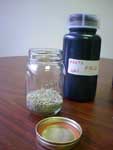
Step 2: The oil is poured slowly into glass containers where the clay and oil are mixed together until all the oil is absorbed into the clay. The pictures below show the oil absorbed into the clay.
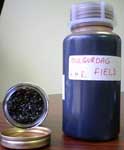
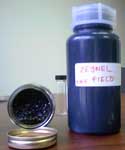
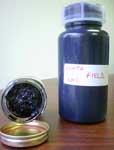
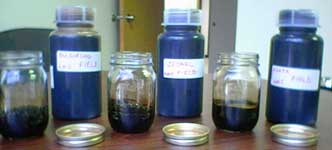
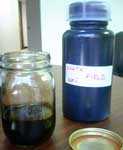
Step 3: A 10% solution of StimuZyme™, previously mixed in tap water, is poured on the clay and oil sludge mixture to evaluate whether the Stimuzyme™ enzymes will release the oil from clay. Below is a picture of the containers immediately after the 10% Stimuzyme solution has been added on top of clay absorbent.
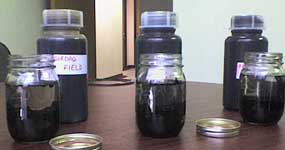
Step 4: The three Containers of 10% StimuZyme™ solution that were poured on the oil laden clay were, without any agitation, immersed in a water bath and heated to near 180 0F as below.
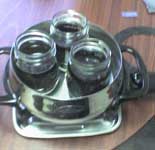
Step 5: The oil samples were taken from heating process and placed on the counter. Over the next hour the following pictures show the oil being lifted by Stimuzyme™ from the oily clay sludge. We added no shaking or agitation to the sample only the Stimuzyme going into clay to pull out the oil was occurring.
Below is a time lapse of pictures from the Extra Heavy Oil sample. From evaluating appearance of the clay and estimating the amount of oil floating free on top it suggests that almost all of oil mixed into the clay is eventually pulled out.

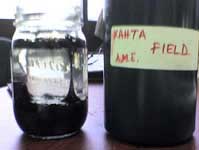
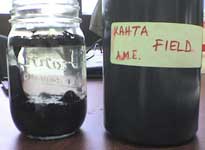
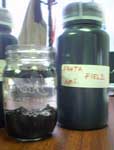
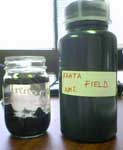
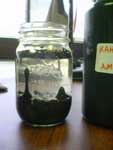
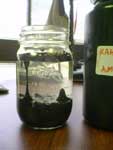
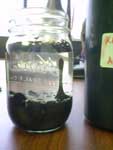
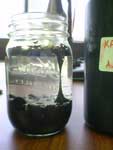
Heavy Oil Field 23 API Gravity Oil:

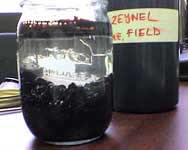
Light Oil Field 37 API Gravity Oil:
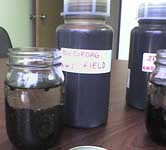
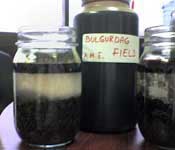
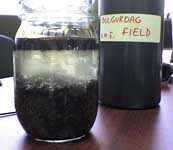
Shaker Tube Tests:
Narrow glass tubes previously coated with Stimuzyme were filled with oil sample of about 10 ml from each of three fields. A volume of 10 ml of 10% concentration Stimuzyme solution, previously mixed with tap water, was added on top of oil sample and each tube was shaken vigorously. The samples were then set on the table to allow the separation of the oil and Stimuzyme™ solution to take place. These pictures below show a sharp interface between the oil and Stimuzyme™ in the extra heavy Extra Heavy Oil and the heavy Heavy Oil samples. This test indicated no significant chemical emulsion between oil and Stimuzyme™ and neither of the oil samples was found to attach to the glass surface. Because there is also no significant absorption found between the oil and glass surface, it indirectly suggests a change in the wettability of the oil. This lack of adhesion of oil to solids means that we can expect improvements in oil mobility in the reservoir and the prevention of plugging of tubulars, wellhead and pipeline should be very effective.
As for the Light Oil oil sample it was a bit different from what we expected. We were a bit surprised that in the Light Oil sample the Oil-Stimuzyme interface was found lower than expected which suggested that about quarter of the Stimuzyme™ was going into solution with the oil. There were also many more bubbles on top of fluid than we normally find with this mixing. Stimuzyme™ in a vast majority of cases does not form any chemical bond with the oil; however, the Light Oil oil sample has some solubility with Stimuzyme™. Therefore we are conducting more evaluations regarding what may be occurring between Stimuzyme™ and Light Oil oil.
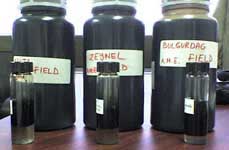
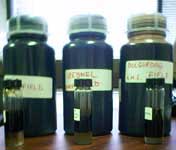




























 Manufacturer
Manufacturer